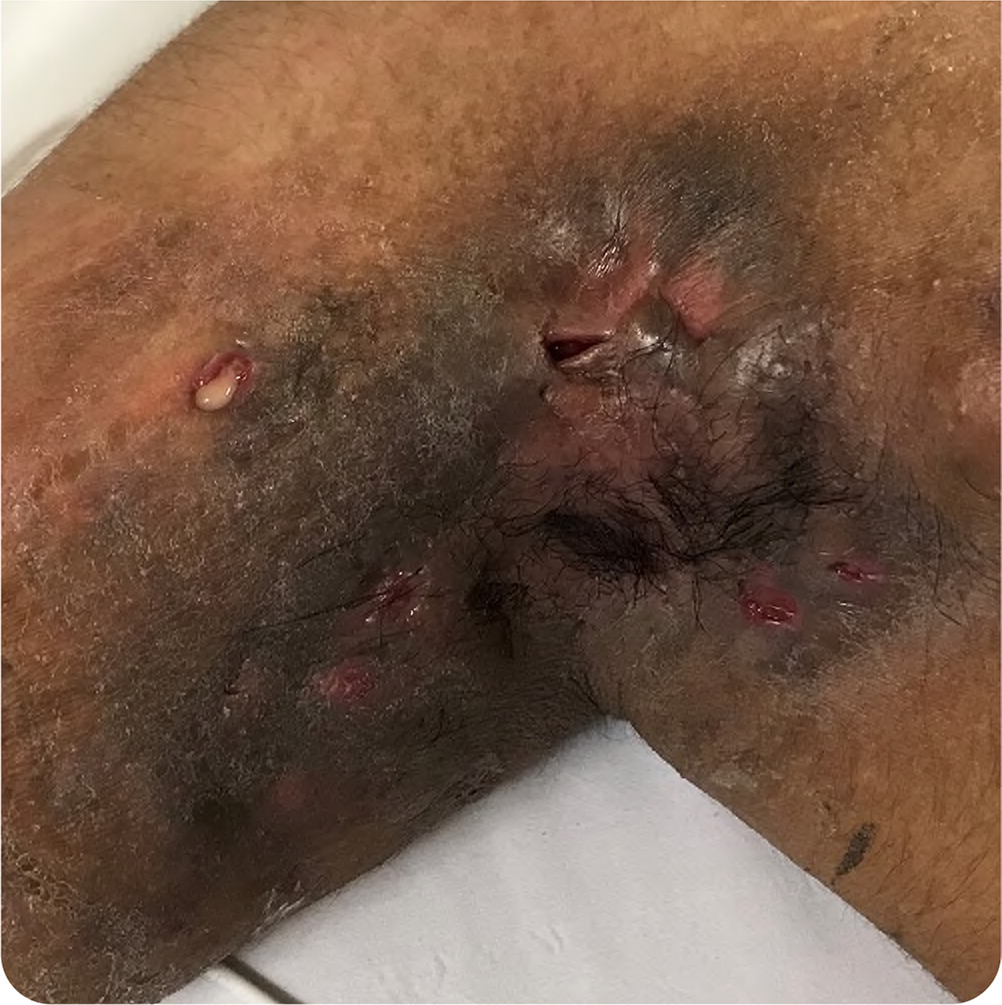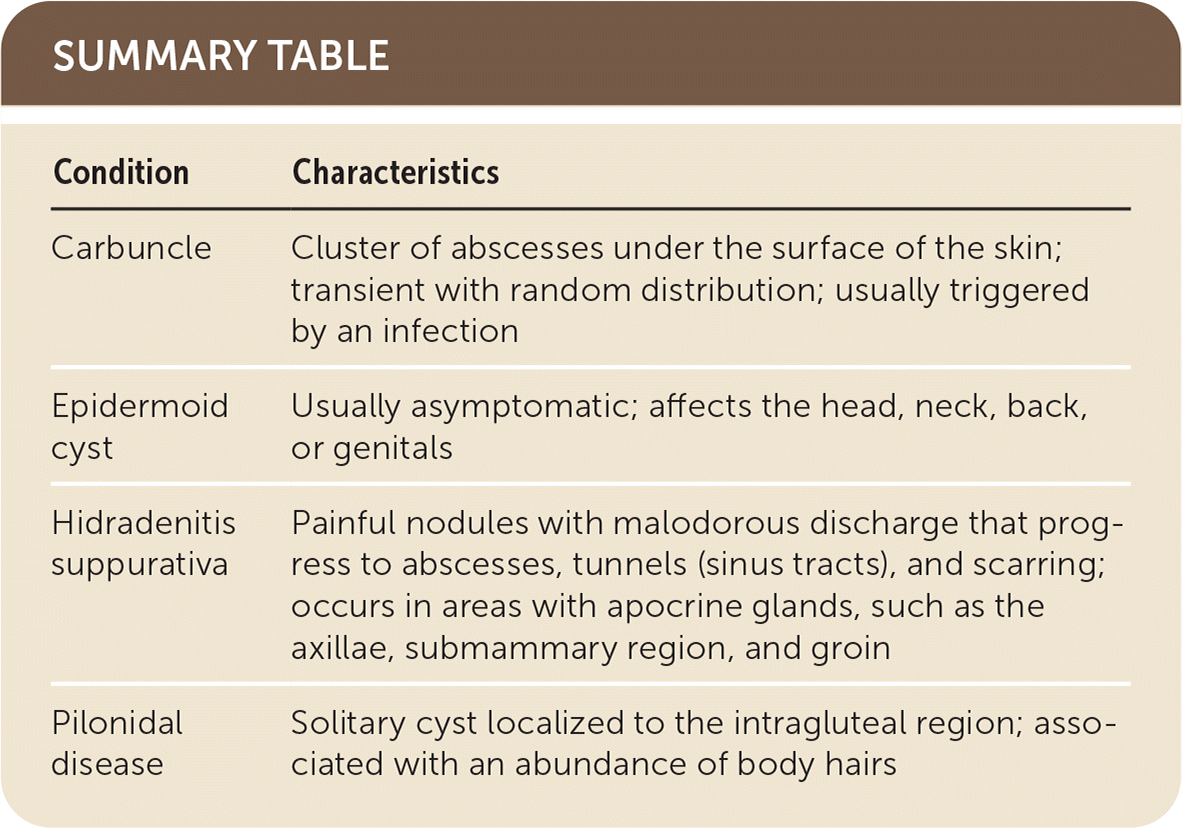
Am Fam Physician. 2020;102(2):111-112
Author disclosure: No relevant financial affiliations.
A 21-year-old man presented with several years of recurrent painful cysts and scarring, accompanied by severe pruritus and malodorous purulent discharge in several areas, including the axillae, buttocks, and gluteal cleft. The symptoms caused physical discomfort and negatively affected the patient's quality of life.
On physical examination, the patient had multiple nodules, abscesses, interconnected tunnels, and scarring in both axillae (Figure 1). Draining tunnels and plaques were also present on his buttocks and gluteal cleft.

Question
Discussion
The answer is C: hidradenitis suppurativa. The diagnosis of hidradenitis suppurativa is clinical with the presence of characteristic morphologies that affect typical areas of the skin and recur at least twice within six months.1 Hidradenitis suppurativa is a chronic, relapsing inflammatory skin disease that affects areas with apocrine glands, such as the axillae, submammary region, and groin.1,2 It presents as painful nodules with malodorous discharge that progress to abscesses, tunnels (sinus tracts), and scarring.1
The Hurley staging system is used to assess the severity of hidradenitis suppurativa.3
Stage I (mild): nodules or abscesses but no tracts or scarring
Stage II (moderate): recurrent abscesses with sinus tracts and scarring
Stage III (severe): multiple interconnected abscesses and sinus tracts.
The pathogenesis of hidradenitis suppurativa involves follicular hyperkeratosis and occlusion, followed by dilation of the follicular unit and subsequent rupture of hair follicles. The release of intraductal follicular contents stimulates inflammation, causing abscess formation, draining tunnels, and residual scarring.3,5 The etiology of hidradenitis suppurativa is not fully understood but is believed to be multifactorial, with genetic, environmental, and hormonal factors.1,3 Many patients (30% to 40%) with hidradenitis suppurativa have a family history of the condition, with an autosomal dominant pattern.1,3,6 Several exogenous factors have also been associated with hidradenitis suppurativa, including obesity, cigarette smoking, and excess androgens.1,4
A carbuncle is a cluster of abscesses under the surface of the skin. The presentation may be similar to hidradenitis suppurativa; however, carbuncles are usually triggered by an infection, are transient, and have a random distribution.7 Fever and lymphadenopathy commonly occur with cutaneous infections such as carbuncles, unlike hidradenitis suppurativa.
Epidermoid cysts can also mimic hidradenitis suppurativa, but they are usually asymptomatic and are millimeters to several centimeters in size.8 Epidermoid cysts can occur on the head, neck, back, or genitals. They are filled with keratin debris that can become inflamed.
Pilonidal disease is a follicular occlusion syndrome affecting the intragluteal region. Pilonidal cysts are usually solitary, localized, and associated with an abundance of body hair.6

| Condition | Characteristics |
|---|---|
| Carbuncle | Cluster of abscesses under the surface of the skin; transient with random distribution; usually triggered by an infection |
| Epidermoid cyst | Usually asymptomatic; affects the head, neck, back, or genitals |
| Hidradenitis suppurativa | Painful nodules with malodorous discharge that progress to abscesses, tunnels (sinus tracts), and scarring; occurs in areas with apocrine glands, such as the axillae, submammary region, and groin |
| Pilonidal disease | Solitary cyst localized to the intragluteal region; associated with an abundance of body hairs |
